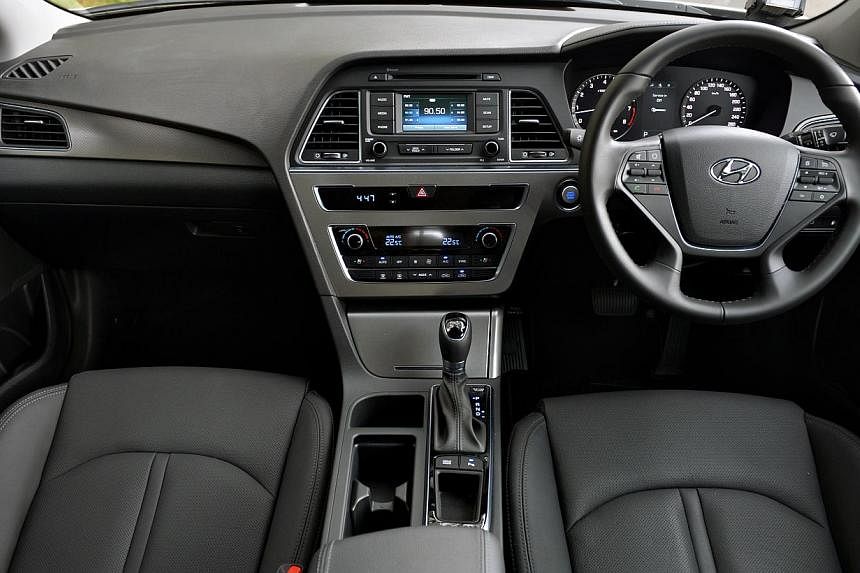Folks in the market for a value-for-money executive sedan with space and presence almost always look to the Camry.
The Toyota sets the benchmark on several fronts, but it really excels by offering lots of sheet metal for the buck. And behind the wheel, it feels more expensive than the $130,000 or so it commands.
On that front, it has no equal. Until now, that is.
The new Hyundai Sonata is a likely usurper, with its sporty and stylish silhouette, which makes the Camry seem sedate, and adequate space and pace.
The Korean car is 4,855mm long, 1,865mm wide and 1,475mm tall, with a wheelbase of 2,805mm. This makes it longer, wider and taller than the Camry - and it offers more legroom.
Yet, it does not come across as an especially lanky or bulky sedan. The Sonata's wedge-shaped profile - with a relatively high waistline and a bonnet that seems to taper towards the grille - allows it to hide its mass rather well.
In fact, it comes across as quite sleek and compact. It is only when you park it next to another large sedan that you notice its dimensions.
Its frontal area, with inset headlamps and daytimerunning LEDs framing the top of its foglamp housings, conveys aerodynamism and sophistication. Its alloy wheels stand out from 50 paces - they could well qualify as the best-looking wheels in town.
Inside, the Sonata is not as luxurious as the Camry, but it offers just as many features.
These include multi-function, four-spoke steering wheel with cruise control buttons on the right and infotainment switches on the left. Dual-zone climate control, with rear vents. Keyless access and ignition. Reverse camera, automatic headlamps, rain-sensing wipers, Bluetooth connectivity and blind-spot warning.
The higher-end version, tested here, comes with a few other features such as a sunroof and hands-free bootlid.
The trim and upholstery may be a little drab but everything is well put together - and you can tell with your eyes as well as your ears.
As mentioned earlier, the Sonata is surprisingly spacious. Rear occupants can stretch out comfortably, even if they are taller than average.
The boot is capacious too, with 510 litres of stowage available. Very few cars offer more cargo space.
On the go, the first impression it makes is one of quietness. Road and traffic noises are kept well at bay. Alas, engine noise intrudes a little when revs go beyond 3,500rpm, which is not infrequent.
The car seems adequate if you are driving in a relaxed manner. But if you are in a hurry, its lack of low-end shove becomes apparent. The engine may benefit from forced induction. Then again, the Camry 2.0, with its modest non-turbo engine and humble four-speed gearbox, comes across as more effortless overall.
The Hyundai handles better than the Toyota around bends, with reassuringly firm steering and an equally firm suspension setting. But on the flipside, it does not cope as well when the tarmac is less than smooth.
For its size, it has an impressively tight turning circle. Together with its taut chassis and responsive steering, the Sonata drives like a smaller car. If only it had a bit more oomph between 1,200rpm and 2,500rpm.
But even as it is, the Korean sedan has lots going for it. And priced about $10,000 less than the Camry, its closest equivalent, it is pretty big on value too.
Another plus point is economy. Averaging 10.5 litres/100km for this test-drive, the car is more frugal than its predecessors and somewhat comparable to what Toyota manages.


